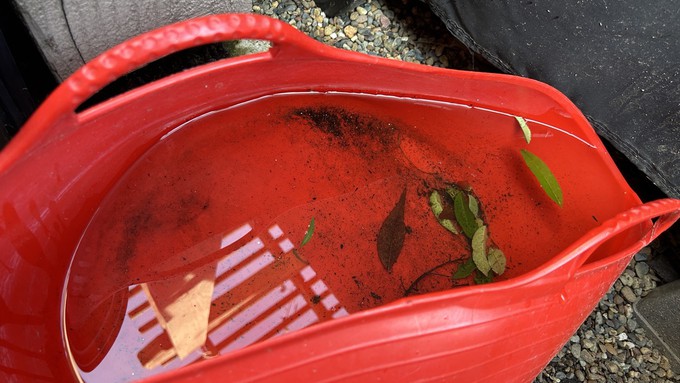
Trees got a good, deep soaking from recent 'atmospheric rivers'

The recent storms left behind a lot of water, but not too much for our soil to hold. (To guard against mosquitoes, be sure to empty any buckets and saucers of water before it warms up again.) Kathy Morrison
When it came to our latest atmospheric rivers, Sacramento found a sweet spot: Good steady rain with a chance to sink in.
In the first eight days of February, Downtown Sacramento received 2.15 inches of rain – double the average for that period, says the National Weather Service. That includes just over an inch during the storm that hit Sunday-Monday, Feb. 4-5, and another half inch on Wednesday, Feb. 7.
As a whole, Sacramento County collection sites averaged 3.32 inches for the first seven days of February, says the weather service. Our second rainiest month behind January, February normally totals 3.59 inches.
Most of that rain had a chance to soak in, replenishing reserves for our suburban forest and landscapes as well as local orchards. That’s good news for trees as they continue to recover from years of drought.
Some communities – particularly those closer to the Bay Area – have been even wetter this month. Davis, for example, recorded 4.13 inches in those first eight days – almost 3 inches above normal.
Locally, wind caused more issues than rain. The strong gusts that accompanied Sunday’s precipitation knocked over dozens of trees (and brought down lots of limbs) as well as many fences. But the local destruction was light compared to last winter’s storms that uprooted hundreds of drought-weakened trees in Sacramento and surrounding cities.
Elsewhere around California, this week’s storms took a heavy toll, causing flooding and mudslides. Long Beach (my hometown) totaled more than 10 inches Feb. 1-7; normal for that week is 0.79. That includes a record 3.16 inches on Tuesday, Feb. 6. Long Beach rarely gets more than 10 inches of rain in an entire year.
All this rain has prompted a wet outlook for our state’s water year. No drought is in the picture, says the National Integrated Drought Information System. (Find its localized data at https://www.drought.gov/.)
NIDIS expects our precipitation to continue to track high. The forecast calls for “60 to 70% probability of above normal precipitation” for the rest of February and “100 to 150% of normal precipitation” for the next 60 days.
Meanwhile, enjoy a sunny break in the weather. Sacramento’s next chance of showers is Thursday, Feb. 15.
More on local weather: https://www.weather.gov/sto/#
Comments
0 comments have been posted.Sacramento Digs Gardening to your inbox.
Sites We Like
Garden Checklist for week of July 21
Your garden needs you!
* Keep your vegetable garden watered, mulched and weeded. Water before 8 a.m. to reduce the chance of fungal infection and to conserve moisture.
* Feed vegetable plants bone meal, rock phosphate or other fertilizers high in phosphate to stimulate more blooms and fruiting. (But wait until daily high temperatures drop out of the 100s.)
* Don’t let tomatoes wilt or dry out completely. Give tomatoes a deep watering two to three times a week.
* Harvest vegetables promptly to encourage plants to produce more. Squash especially tends to grow rapidly in hot weather. Keep an eye on zucchini.
* Pinch back chrysanthemums for bushy plants and more flowers in September.
* Remove spent flowers from roses, daylilies and other bloomers as they finish flowering.
* Pinch off blooms from basil so the plant will grow more leaves.
* Cut back lavender after flowering to promote a second bloom.
* It's not too late to add a splash of color. Plant petunias, snapdragons, zinnias and marigolds.
* From seed, plant corn, pumpkins, radishes, winter squash and sunflowers.